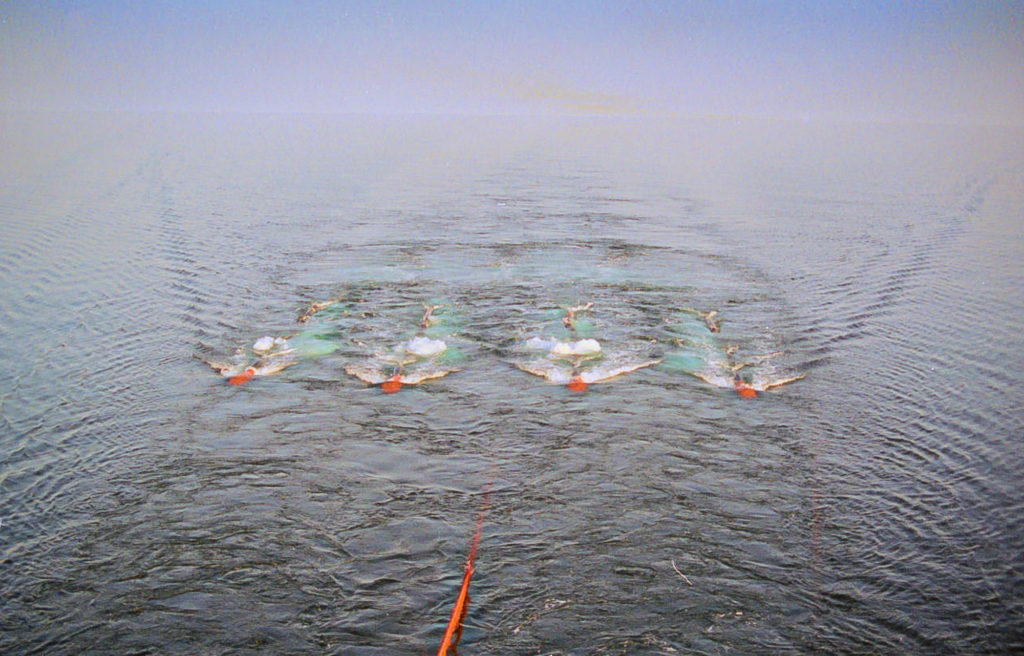I’ve used metaphors throughout my life to illustrate how things work. I’ve come to realise that may be because the use of the metaphor helps me understand why we do the things we do. As Simon Sinek said ‘People don’t buy what you do, they buy why you do it.’

I recall a house registrar who was taking an arterial blood sample and I asked how sharp his needle was. His reply mentioned gauges and ISO standards and he appeared irritated when I countered that there was no unit for sharpness. Note to self: don’t annoy your phlebotomist. The truth is that no standardised test yet exists for evaluating needle sharpness. This is much like in the world of geophysics, where seismic imaging is done with impulses that become wavelets when convolved with acoustic contrasts in the earth. There are no units for wavelet sharpness because each wavelet is shaped according to the task.
These arcane wavelets matter so much that for years there was a great secret in the seismic industry. The Orca Basin was the place to test your wavelet. And there was a very limited pool number of the many rival companies who knew this.
The Orca Basin is a large hypersaline anoxic basin in a seafloor depression along the Texas-Louisiana continental slope in the Gulf of Mexico. It’s about 2200 metres below sea level and of course, it has a remarkable geophysical property. There is a large acoustic impedance contrast between the normal salt water and the eight times saltier brine that is trapped within the declivity.
This means, and this was very exciting for a geophysicist, that impulsive sound energy will reflect from the surface of the brine pool because of the eight fold density contrast. So if a boat was to make a bang above the basin and if that boat had an acoustic recording device in tow, well, there’d be an observable deflection in the signal when the reflection returned to the surface.
I won’t distract you with the technical details but I need to tell you that a collection of cylinders charged by compressed air are generally used to make the bang I mentioned above. The cylinders are specifically arrayed and towed some ten metres below the surface. An instantaneous release of the air from the chambered cylinders into the water makes a loud, sharp noise but also creates a bubble. The air bubble oscillates as it rises to the surface of the water. The sound itself radiates out in 360 degrees at 1500 metres per second but we’re interested in part of the wavefront that travels down to the sea floor and penetrates the rocks. Once into the rocks, it reflects each time it encounters something that is denser. The sound isn’t the ideal sharp bang or a spike of energy because of that bubble that was oscillating as it rose to the surface. In fact each oscillation is a secondary source of energy and this compound signal is called the source signature. I’ll oversimplify the physics even more for the narrative hoping to help you imagine the concept. There’s a thing shaped like a sperm heading down into the salt below and when it bounces or echoes back off the dense brine, we’ll be able to see its shape and use our computer algorithms to collapse it back to a point to remove the blur from any edges in our images.
This is why the Orca Basin was important. Our seismic recording systems could capture the airgun source signatures in the reflection from the brine. And when we knew the signature, we could deconvolve it from the images, sharpening or improving their resolving power. Our computers could only sharpen the images once we knew the signatures. This was before we had the full understanding of the maths needed to model the signatures. And of course, we could test our modelling against signatures recorded in the Orca Basin. Almost perfect.
And being in the game, I spent a few years working on projects in the 1980’s that involved improving our technology and part of that involved trials conducted over the Orca Basin.
Imagine my surprise when David Attenborough guided me from the living room to the Orca Basin in 2017. Suddenly, millions of people have seen the once secret Orca Basin. This was because the BBC showed an eel going into toxic shock when it got into the hypersaline anoxic fluid that we had been bouncing source signatures off all those years ago.
I, for one, had no idea that much could live in such harsh environments. It turns out that the brine is a particle trap and holds eight to ten time more particles than the surrounding water. Particles for you and me are food for other life forms. A place that hold eight time more food might be called a larder. Of course microbes have found their way there. And so, higher life forms have followed to eat them. And so it goes, all the way up to an eel. The Cutthroat Eel has set up a permanent hunt there too.
As you might expect of a poisonous fluid, the microbial activity is concentrated at the brine-seawater interface. Same place that reflected our signatures so we could sharpen our images.
That’s where the eel thrives too.
I strongly suggest you follow this link and watch the clip from Blue Planet II on YouTube. It is awesome to see an eel make it out alive. Let me list just a couple of the many awesomes your will experience: eels live there, humans can film there, humans can spot eels getting poisoned there … and David Attenborough brought me back there after an absence of three decades.

Leave a Reply